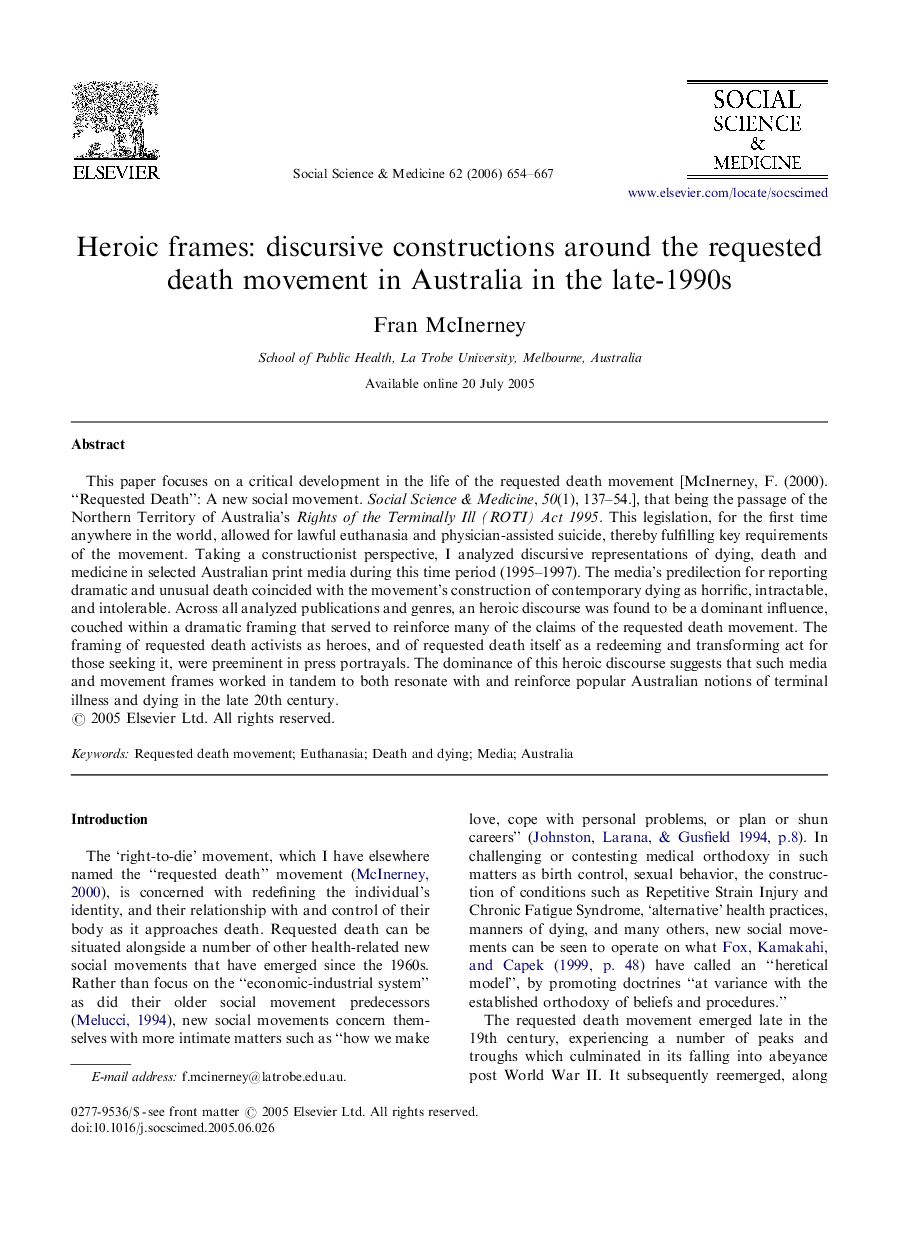| Article ID | Journal | Published Year | Pages | File Type |
|---|---|---|---|---|
| 955096 | Social Science & Medicine | 2006 | 14 Pages |
This paper focuses on a critical development in the life of the requested death movement [McInerney, F. (2000). “Requested Death”: A new social movement. Social Science & Medicine, 50(1), 137–54.], that being the passage of the Northern Territory of Australia's Rights of the Terminally Ill (ROTI) Act 1995. This legislation, for the first time anywhere in the world, allowed for lawful euthanasia and physician-assisted suicide, thereby fulfilling key requirements of the movement. Taking a constructionist perspective, I analyzed discursive representations of dying, death and medicine in selected Australian print media during this time period (1995–1997). The media's predilection for reporting dramatic and unusual death coincided with the movement's construction of contemporary dying as horrific, intractable, and intolerable. Across all analyzed publications and genres, an heroic discourse was found to be a dominant influence, couched within a dramatic framing that served to reinforce many of the claims of the requested death movement. The framing of requested death activists as heroes, and of requested death itself as a redeeming and transforming act for those seeking it, were preeminent in press portrayals. The dominance of this heroic discourse suggests that such media and movement frames worked in tandem to both resonate with and reinforce popular Australian notions of terminal illness and dying in the late 20th century.
